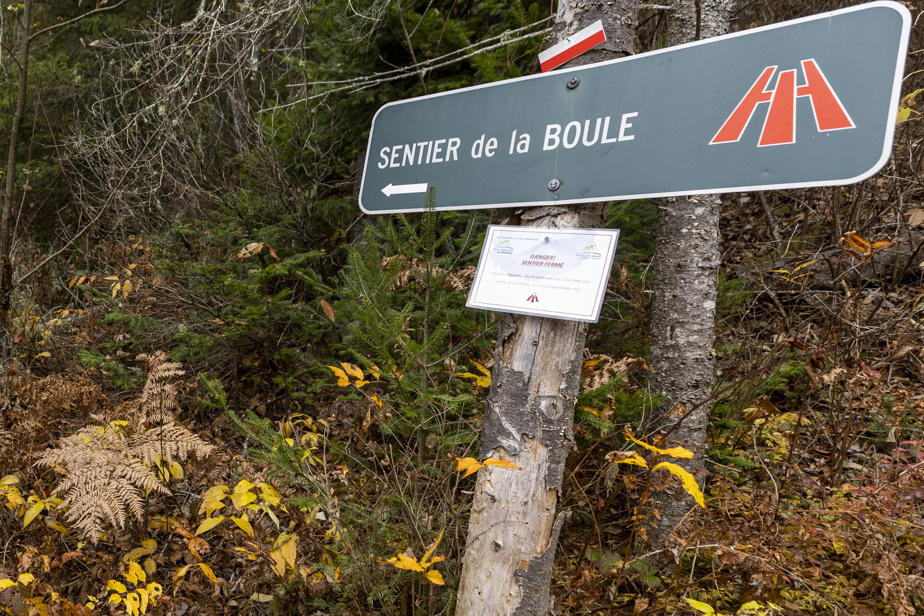The National Trail, this long, more or less continuous ribbon that crosses a good part of Quebec, is well on its way to expanding. Last July, the Quebec government announced an investment of $2.7 million to develop new sections and upgrade existing sections.
Established trail managers had until November 10 to submit projects. They did not deprive themselves. “There is really a great mobilization of the community,” rejoices Grégory Flayol, program director at Rando Québec, the federation which will analyze the projects and make recommendations to the Ministry of Sport, Leisure and Outdoors.
“It allows us to move to a higher level,” says Mr. Flayol. There had been financial aid in recent years, within the framework of standardized programs from the Ministry of Education, but now, with a measure dedicated to the National Path, we can have more structuring development plans locally and regionally. It also made it possible to re-mobilize many actors. »
In Outaouais, the municipalities of Val-des-Bois, Lac-Simon, Montpellier and Duhamel have worked together to connect Val-des-Bois to Duhamel. If the project is selected, a major section of 70 kilometers will cross the Papineau-Labelle wildlife reserve.
“A trail had already existed for cross-country skiing,” notes Richard Chartrand, one of the creators of the Route des Zingues, a portion of the National Trail which runs north from Duhamel. “The reserve didn’t take care of it, there was logging, so ultimately, it discouraged everyone. The 2.7 million subsidy program, which aims to connect pieces of trail that are not connected to each other, is spot on! »

PHOTO MARCO CAMPANOZZI, LA PRESSE ARCHIVES
The National Trail is almost complete in Lanaudière, but upgrades are needed in a few places.
Richard Chartrand has another project in mind: connecting the northern terminus of the Route des Zingues, at Lac Marie-Lefranc, to the southern terminus of the L’Héritage trail, in Labelle. It is a small section of 15 kilometers which would connect the Outaouais to the Laurentians and Lanaudière. “I suggested a slightly comical name, the Oulala crossing. »
The municipality of La Minerve, where the new section would pass, however, showed little interest. This does not discourage Mr. Chartrand. “We’re going to come back with that next year,” he says. I’m like a pike, I won’t let go. »
Rando Québec actually hopes that the government will continue the program with a new subsidy next year.

PHOTO HUGO-SÉBASTIEN AUBERT, LA PRESSE ARCHIVES
We would like to connect the Bras-du-Nord Valley (seen here) to the Portneuf regional park.
In the meantime, projects are underway in other regions of Quebec.
“There is a collective that is being organized in the Rimouski region to possibly propose a route from Rimouski to the Portes de l’enfer canyon, then to Neigette Falls [Saint-Anaclet], says Grégory Fayol. There is also work being done with the Portneuf regional park so that it can connect to the Bras-du-Nord Valley. »
In Lanaudière, we would like to complete small sections, just a few kilometers, but we are mainly looking to upgrade infrastructure which is starting to age.
A desired ecological corridor

PHOTO MARCO CAMPANOZZI, LA PRESSE ARCHIVES
The Réal-Martel footbridge salutes the contribution of one of the fathers of the National Trail.
At Rando Québec, we want to perpetuate existing infrastructure and trails. “There are a lot of threats when the trail passes through public lands,” explains Mr. Flayol. The main actor is the Ministry of Resources and Forests, which can dispose of what is done in the forest as it wishes. »
Currently, the National Trail only has 30 meters of protection on each side. “This riverside strip can collapse at the slightest gust of wind,” laments Grégory Flayol. So, we lose the trail, we lose the quality of the landscape and we lose biodiversity. »
Rando Québec therefore joined forces with the Society for Nature and Parks (SNAP Québec) to evaluate the ecosystems crossed by the trail and study the mechanisms to protect it.
The partners recommend a protection zone of 300 meters on each side of the trail. This would protect 35 wildlife species and 71 plant species with a precarious status.
“This is more than what we find in Mont-Tremblant Park, the largest national park in Quebec, with a smaller surface area,” notes Mr. Flayol.
We would be talking about a real ecological corridor. “With 300 meters on either side, we think that the loss of profit for other stakeholders in the public forest, whether the forestry or mining industry, would be really minimal compared to the ecological, health and safety gains. heritage, culture and tourism that we could do by protecting this territory,” maintains Mr. Flayol.
Rando Québec has another card in its game to promote the National Trail: a short film by Annie-Claude Roberge, Adventure on footabout to exit in Montreal, then in the regions crossed by the trail.
In a first version of this text, it was indicated that municipalities and organizations were eligible to submit projects. Rather, these are established trail managers.
Number of the week
94
This is the number of protected areas crossed or bordered by the National Trail.
Video suggestion
Hard work
Beavers work hard to carry out forestry work.
